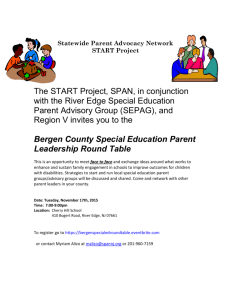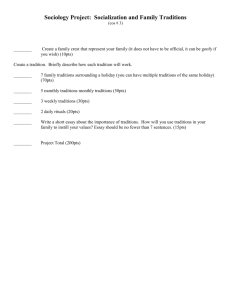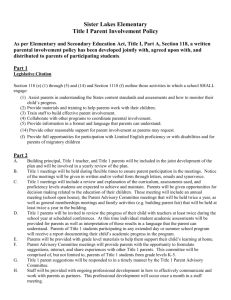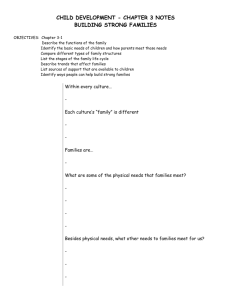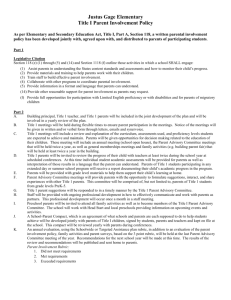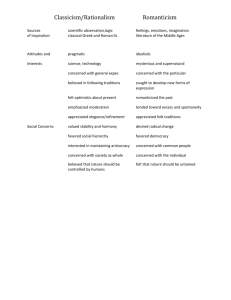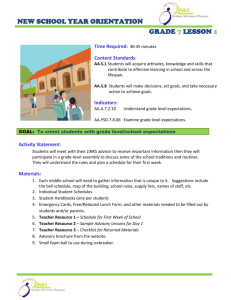Introduction to High School
advertisement
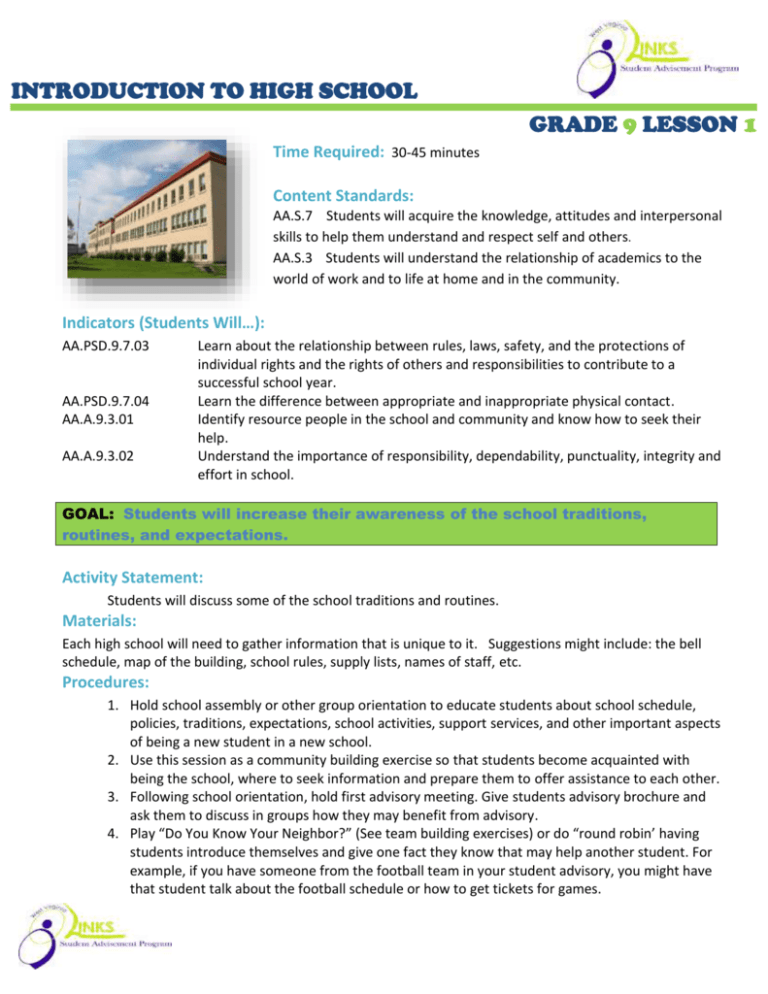
INTRODUCTION TO HIGH SCHOOL GRADE 9 LESSON 1 Time Required: 30-45 minutes Content Standards: AA.S.7 Students will acquire the knowledge, attitudes and interpersonal skills to help them understand and respect self and others. AA.S.3 Students will understand the relationship of academics to the world of work and to life at home and in the community. Indicators (Students Will…): AA.PSD.9.7.03 AA.PSD.9.7.04 AA.A.9.3.01 AA.A.9.3.02 Learn about the relationship between rules, laws, safety, and the protections of individual rights and the rights of others and responsibilities to contribute to a successful school year. Learn the difference between appropriate and inappropriate physical contact. Identify resource people in the school and community and know how to seek their help. Understand the importance of responsibility, dependability, punctuality, integrity and effort in school. GOAL: Students will increase their awareness of the school traditions, routines, and expectations. Activity Statement: Students will discuss some of the school traditions and routines. Materials: Each high school will need to gather information that is unique to it. Suggestions might include: the bell schedule, map of the building, school rules, supply lists, names of staff, etc. Procedures: 1. Hold school assembly or other group orientation to educate students about school schedule, policies, traditions, expectations, school activities, support services, and other important aspects of being a new student in a new school. 2. Use this session as a community building exercise so that students become acquainted with being the school, where to seek information and prepare them to offer assistance to each other. 3. Following school orientation, hold first advisory meeting. Give students advisory brochure and ask them to discuss in groups how they may benefit from advisory. 4. Play “Do You Know Your Neighbor?” (See team building exercises) or do “round robin’ having students introduce themselves and give one fact they know that may help another student. For example, if you have someone from the football team in your student advisory, you might have that student talk about the football schedule or how to get tickets for games. INTRODUCTION TO HIGH SCHOOL GRADE 9 LESSON 1 5. Key issues to cover during this session may include: Ice Breakers Student Handbook/Planner School Rules 6. Suggest that students make at least two copies of their schedule so that if they lose one they will have an extra copy. 7. Give students the important school phone numbers (e.g. the main office, counseling office, attendance office, etc.) 8. Identify key people and places including their school counselor, school nurse and principals. 9. Talk to students about clubs or sports. 10. Have senior mentor available to answers key questions. Discussion: 1. Does anyone have any questions? 2. How are you finding your way around our school? 3. What is the one fear or concern you have about being a freshman? Integrative Closing Statement: The first few weeks of high school can be overwhelming. Remind your students that knowledge is power, and that by learning the procedures and traditions of their school, they will be off to a good start. They may also take more pride in their school. Be patient with those students who may need you to repeat some of the information you have shared today. Offer positive suggestions and encouragement. Additional Resources: Power Point – “9th Grade Orientation” can be shown at Opening School Assembly. Look under Power Point Section in LINKS Program Guide. LINKS coordinator can adapt to align with your school. Extension Activities: Do walking tour of building identifying key people and places.



